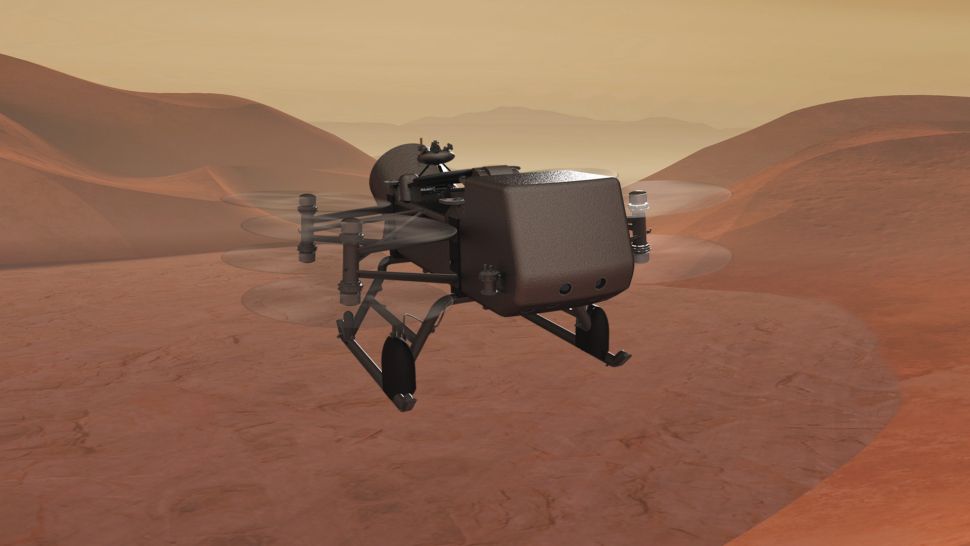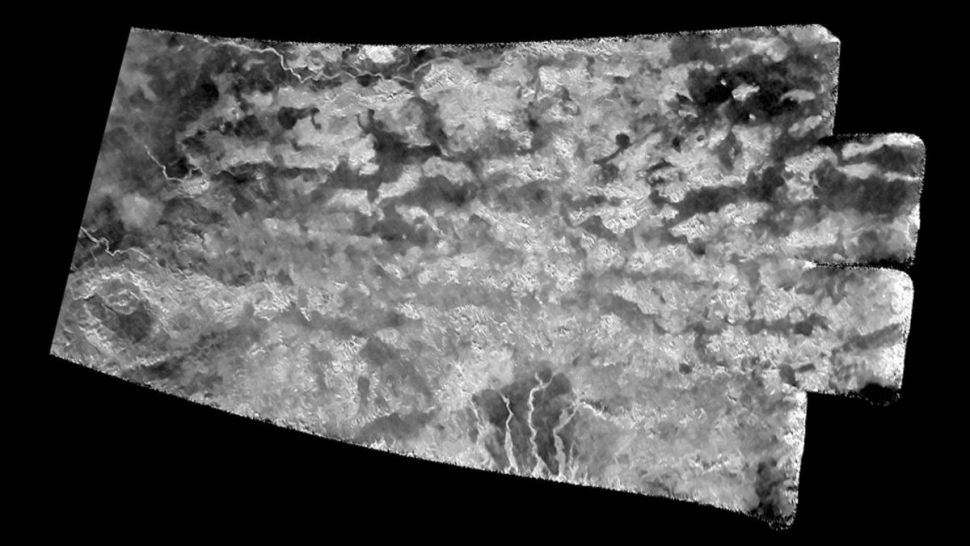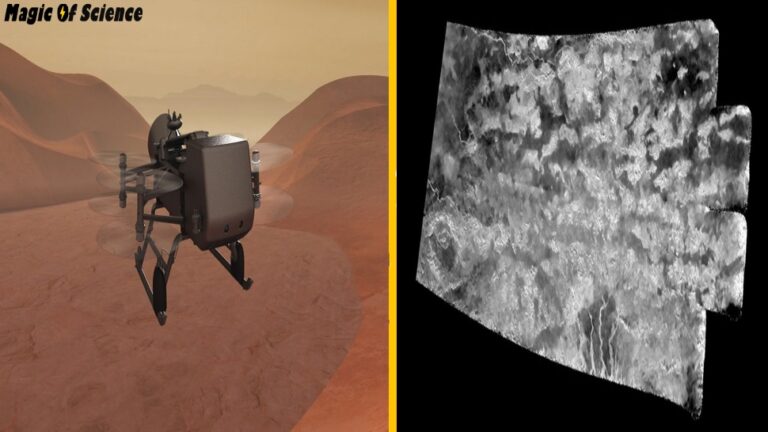NASA’s Titan Dragonfly will touch down on a field of dunes and shattered ice.
The exploration of Saturn’s largest moon Titan is set to take to the sky.
According to a recent study of radar data from the Cassini probe, NASA’s Dragonfly mission to Saturn’s biggest moon will land amid a landscape of dunes and broken, ice bedrock.
The 2027-born rotorcraft Dragonfly will reach Titan in 2034 and conduct aerial explorations of the planet. According to NASA, Dragonfly will be able to go around 10 miles (16 kilometers) every flight in a half-hour, far more than a wheeled rover’s range. It will investigate a region with a width of hundreds of miles or kilometers during the course of its two-year mission. Dragonfly must first soft-land on Titan under a parachute, on frozen ground that is obscured from plain view by the thick hydrocarbon fog that covers the moon’s atmosphere, before it can take to the skies on its own.

The Shangri-La dune area, next to the 50-mile-wide (80-kilometer) crater, Selk, will be the location of Dragonfly’s landing. A team of scientists led by planetary scientist Léa Bonnefoy of Cornell University has reexamined the images taken of this area by NASA’s Cassini spacecraft during its mission to Saturn between 2004 and 2017. The results provide the most precise assessment of Dragonfly’s proposed landing site to date.
In a release, Bonnefoy said: “Dragonfly… is moving to a scientifically exceptional region” (opens in new tab). “Dragonfly will touch down in a dry, equatorial area of Titan. Liquid methane does occasionally shower, but the environment is more akin to a desert on Earth with dunes, a few tiny mountains, and an impact crater.”
Selk is a fascinating place. With a geological age of only a few hundred million years, the impact that cut it out would have melted the surrounding ice, causing interactions between the organic molecules in the hydrocarbon soup on Titan’s surface and the fresh liquid water. Prebiotic chemistry, or chemistry involving carbon-rich compounds but not mediated by living creatures, is of great interest to astrobiologists.
However, the resolution of Cassini’s radar pictures of the region is just 1,000 feet (300 meters) per pixel at best. We undoubtedly missed a lot of little rivers and scenery, according to Bonnefoy.
Thanks to the Huygens lander from the European Space Agency, which towed Cassini before parachuting to Titan’s surface in January 2005, scientists are aware that such rivers indeed exist on Titan. The temperature of – 290 degrees Fahrenheit (minus 179 degrees Celsius) is far too low for these rivers to contain any liquid water. Instead, vaporized forms of methane and ethane fall from the icy sky, wash off the water-ice bedrock, and enter river tributaries that feed enormous lakes.

However, Cassini’s pictures did offer a variety of vantage points. It made 127 close passes to Titan during its mission, and during each one it observed features in the vicinity of Dragonfly’s landing location from various angles, varying in inclination from 5 degrees to 72 degrees.
Bonnefoy’s team was able to evaluate the topography of the area within the constraints of the picture quality by examining how the ground generated various-shaped shadows depending on the viewing angle, and they discovered no significant show-stopping obstructions that Dragonfly would need to avoid.
The height of the rim of Selk crater was also estimated by the scientists, and they discovered that it varied from less than 650 feet (200 m) tall in some places to 2,000 feet (600 m), which is more than predicted and suggests a less degraded crater rim.
The research was published Aug. 30 in The Planetary Science Journal.
Do not forget to share your opinion with us to provide you with the best posts !





0 Comments